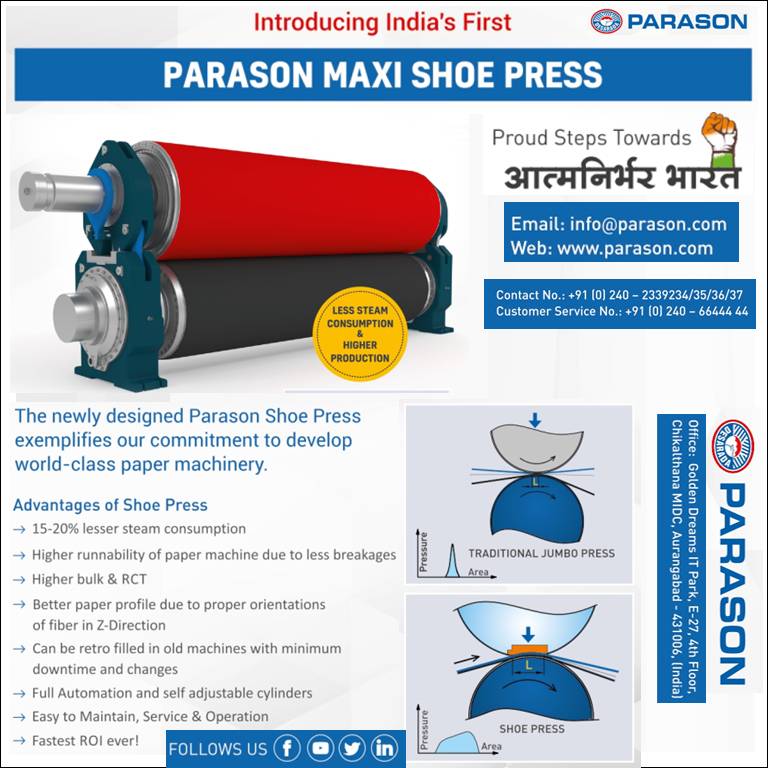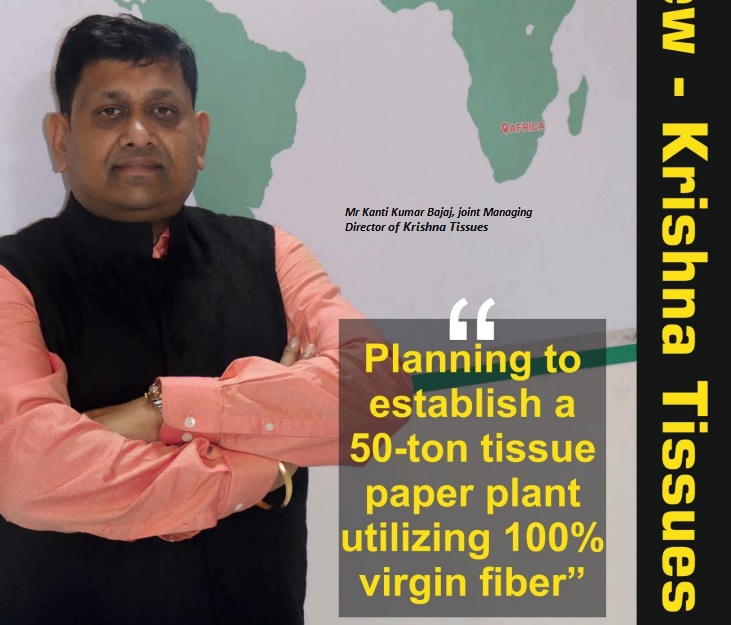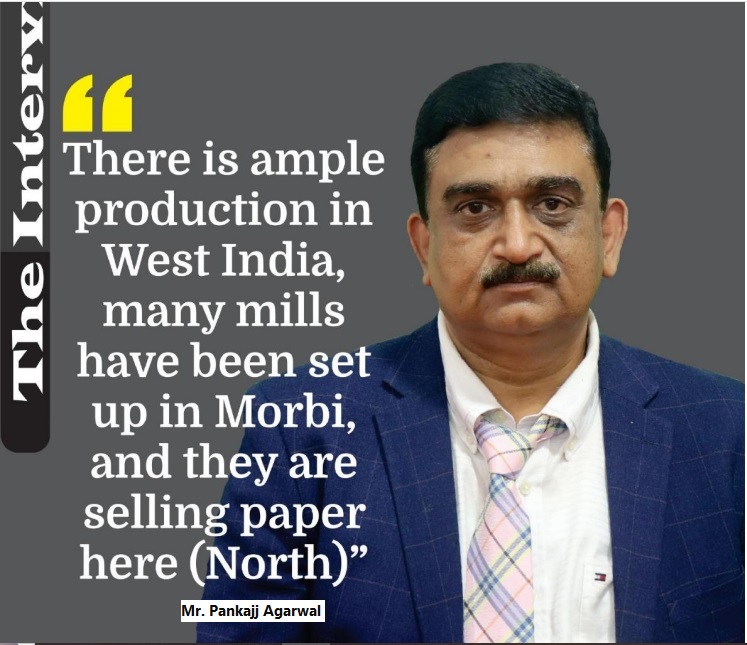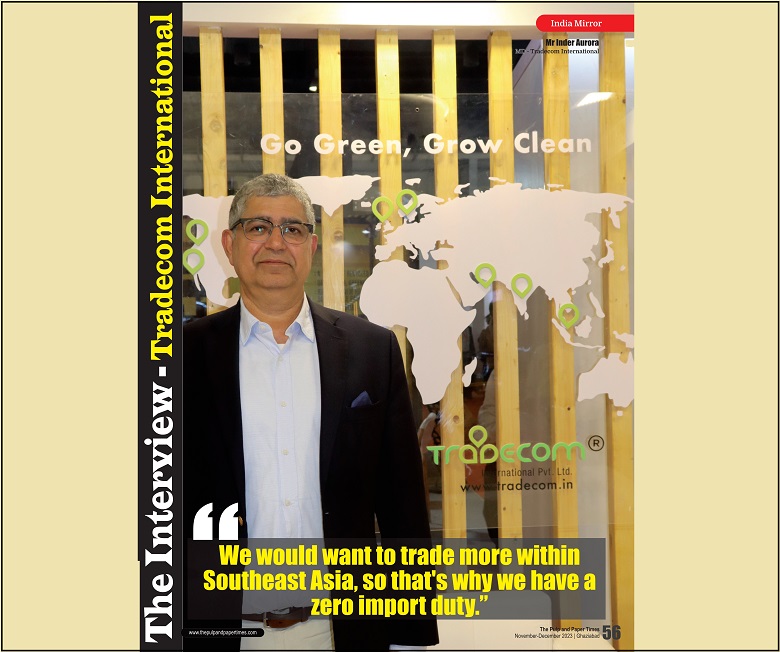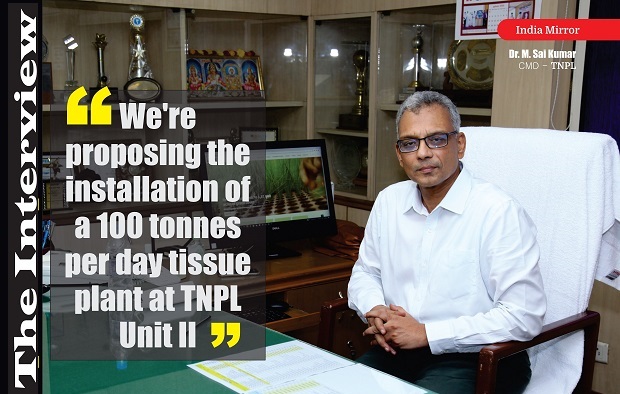Local market is slowing down because the cost of Importing is lesser than the cost of buying from Indian paper mills, says Mr Bhootra, KPMSA
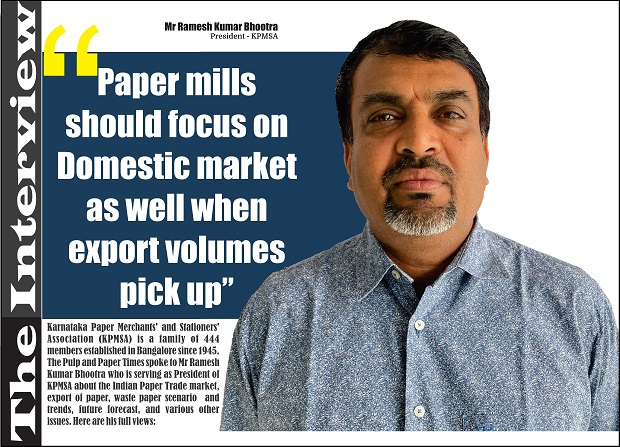
Local market is slowing down because the cost of Importing is lesser than the cost of buying from Indian paper mills, says Mr Bhootra, KPMSA
-Mills are working with very low margins and face very difficult times
Karnataka Paper Merchants' and Stationers' Association (KPMSA) is a family of 444 members established in Bangalore since 1945. The Pulp and Paper Times spoke to Mr Ramesh Kumar Bhootra who is serving as President of KPMSA about the Indian Paper Trade market, export of paper, waste paper scenario and trends, future forecast, and various other issues. Here are his full views:
The Pulp and Paper Times :
Q: Please give us a brief introduction of Karnataka Paper Merchants' and Stationers' Association (KPMSA)?
KPMSA is a family of 444 members established in Bangalore since 1945. Our aim is to bring all the Paper and Stationer’s together to bring a positive change in the market and society. We aim to promote the following:
• Paper as a Recyclable and environmentally friendly product
• Better understanding between all Paper associations across the country
• Social causes like helping school children with books and stationery
• Carry out activities which promote use of paper and allied products
Q: Being a reputed paper association, what is your quick review of the present paper trade market scenario? About demand and supply dynamics of various paper grades, especially Coated, uncoated woodfree, duplex, Newsprint, and Kraft paper segments.
In my view the local market is slowing down because the cost of Importing is lesser than the cost of buying from Indian mills. This has brought a negative sentiment in the overall market and none of the resellers are willing to keep any stocks and everyone wants to play the wait and watch game, leading to limited consumption.
Q: Excess Capacity and Export decline have hit hard to Kraft and Duplex segment across India. Do you think both factors are the main reason behind a sluggish market or the organic growth of 6 to 7% per annum vanishing or reducing due to recession, inflation and war?
Economic factors such as excess capacity and a decline in exports definitely have a big impact on all industries and especially the paper industry with so much international competition. Due to this factor businesses, employment, and overall economic health take a hit. This should be a wakeup call for all mills who focus first on the export market and treat the domestic market as a Plan B. In my recent experience, all paper mills were focusing on export and the domestic market demand was not fulfilled. This forced all traders looking at imported alternatives and lead to a sluggish domestic market with foreign mills eating up all the market share in the last quarter.
Q: New capacities in South East Asia, China, and in GCC have really turned down the export from India. Do you think this export decline will remain permanently? Or if not then why?
In my view export volumes depend on factors like Cost competitiveness, Government Trade policies, innovation in quality and streamlined supply chain. With help from the government and some good strategic raw material procurement, exports should pick up again. But I want to reiterate that all Mills should focus on Domestic market as well when export volumes pick up.
Q: There is a huge demand for writing and printing paper which is driven by the education sector, and the growth of the eCommerce sector which is creating opportunities. And on the other hand, even today, per-capita consumption of paper in India is low. Is the paper sector, which is expecting to yield high returns in the next five to 10 years, carefully calibrating the prices of paper?
Prices for WPP is overall on the higher side from Indian Manufacturers. With prices on a steady decline from the past 2 quarters, I feel the prices should further be revised to match the demand and supply. As for the consumption of paper, I feel there is a much higher growth opportunity with tier 2 and tier 3 cities which have now focused on education and with each percentage jump in literacy rate, the consumption of paper should grow. These tier2 and tier 3 cities have also started using ecommerce which has already reflected in the increased demand from the packaging industry.
Q: One of the largest paper-making giant, Asia Pulp and Paper (APP), have received a land allotment letter to set up one of India's most extensive paper manufacturing infrastructure (1.2 million MTA). APP will produce WPP, Tissue and Packaging Grades in India; what is your view on this massive investment? Will the local market of these grades experience a slowdown? How do Indian paper mills compete in these grades?
It is good to see APP being so bullish on India and deciding to make such a large investment in India. Local manufacturers will definitely feel the effects of this and they need to buck up and plan strategies for the long term. With prior knowledge about the market should give the local manufacturers an initial edge over the new player but it will be interesting to see how this plays out. It will all depend on the strategies applied by each player.
Q: How would you evaluate the waste paper market, European Union is planning to ban or partially ban the waste paper export to other countries, new big capacities are coming up in US, Europe and Southeast Asia which are to consume waste paper majorly. How do you assess all this development for a waste paper buyer, if you could shed a light?
In my view, the prices of waste paper – particularly for the production of Duplex Boards (Grey Back and White Back) - have fallen drastically in the last few months and it feels like they are at their lowest as of now. Mills are working with very low margins and face very difficult times as on date. Demand from Europe and other western countries might further worsen the situation and make recycled paper procurement more difficult. With increased input costs and low demand, it looks like tough times for the recycled paper market.
Q: There is a sharp fall in Pulp prices globally, means there will be a fall in prices of paper, as well outside of India. If Paper at these lower prices comes into India, it will definitely affect domestic prices. This will have a significant impact on the profitability in the near term as well as the medium term. Please shed some light on this scenario.
In the short term it should bring down the paper prices and this effect has already started in the local market. But for the long term, I feel the pulp prices should go up again as seen in the past few weeks and this should drive up prices again.
Q: The Indian Paper Manufacturers have exported a huge Quantity in of multifold various products in FY 2020 -21 and 21-22. Due to material exports, there was a shortage of material and the rates per tonne were skyrocketed more than double in just a year from 2021 - 22 to 2022 -23 and availability was an issue which hampered the Businesses of various Indian industries of Make in India project. How do you take this scenario? Do you think excess export of paper is not good for domestic pricing structure?
As I said earlier, Mills need to focus on domestic markets equally and this has hampered their hold in the domestic market. Focus on exports forces converters to look at other shores and when exports dry up it takes a while for the domestic mills to again catch up with the market.
Q: How does KPMSA evaluate the sustainability of Indian Paper Industry? What challenges and opportunities might surface in coming future?
As a Paper and Stationer association, we place a core emphasis on paper sustainability and always aim to promote paper as a recyclable and reusable commodity. With public drives promoting cleanliness, waste management and reusability of paper, we aim to educate school children and the general public regarding the value of Paper and It’s products.
With the advent of a digital world, the need for paper in some segments has fallen drastically. A good example is the Invitation Card Market - which has seen a major decline in consumption. But with some re-imagination and innovation, it has seen a resurgence with more premium packaged Invitation Boxes with gifts and souvenirs. Ban of Single use plastics has also opened up other opportunities in the Cup segment, Paper Plate segment and Paper Bag segments. Paper being such a versatile product, innovation and re-imagination can sustain it for the coming future.
Q: Any message for the paper industry?
Paper being an eco-friendly material, does not damage the environment and it is also one of the most recycled product. With new innovations of manufacturing from agro based sources and increased demand from the packaging industry and ecommerce industry, the future looks bright.
As Malcolm Gladwell once said :“The visionary starts with a clean sheet of paper, and re-imagines the world.”
Web Title: Local market is slowing down because the cost of Importing is lesser than the cost of buying from Indian paper mills, Mr Bhootra, KPMSA




 Join WhatsApp Group
Join WhatsApp Group Join Telegram Channel
Join Telegram Channel Join YouTube Channel
Join YouTube Channel Join Job Channel (View | Submit Jobs)
Join Job Channel (View | Submit Jobs)




